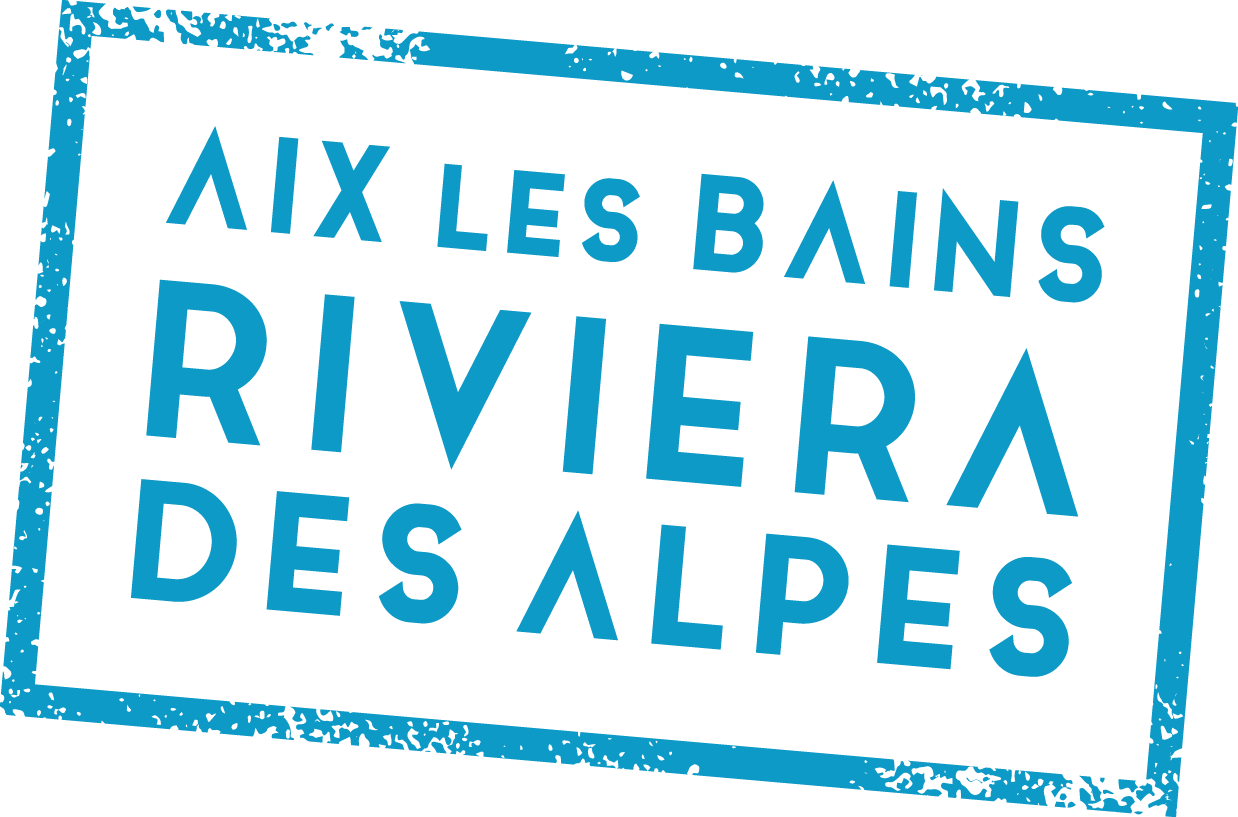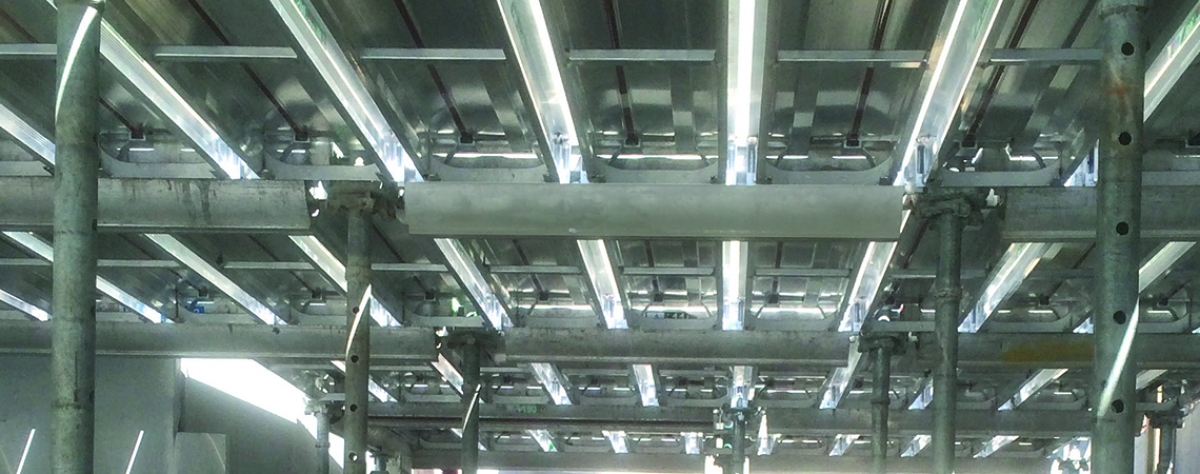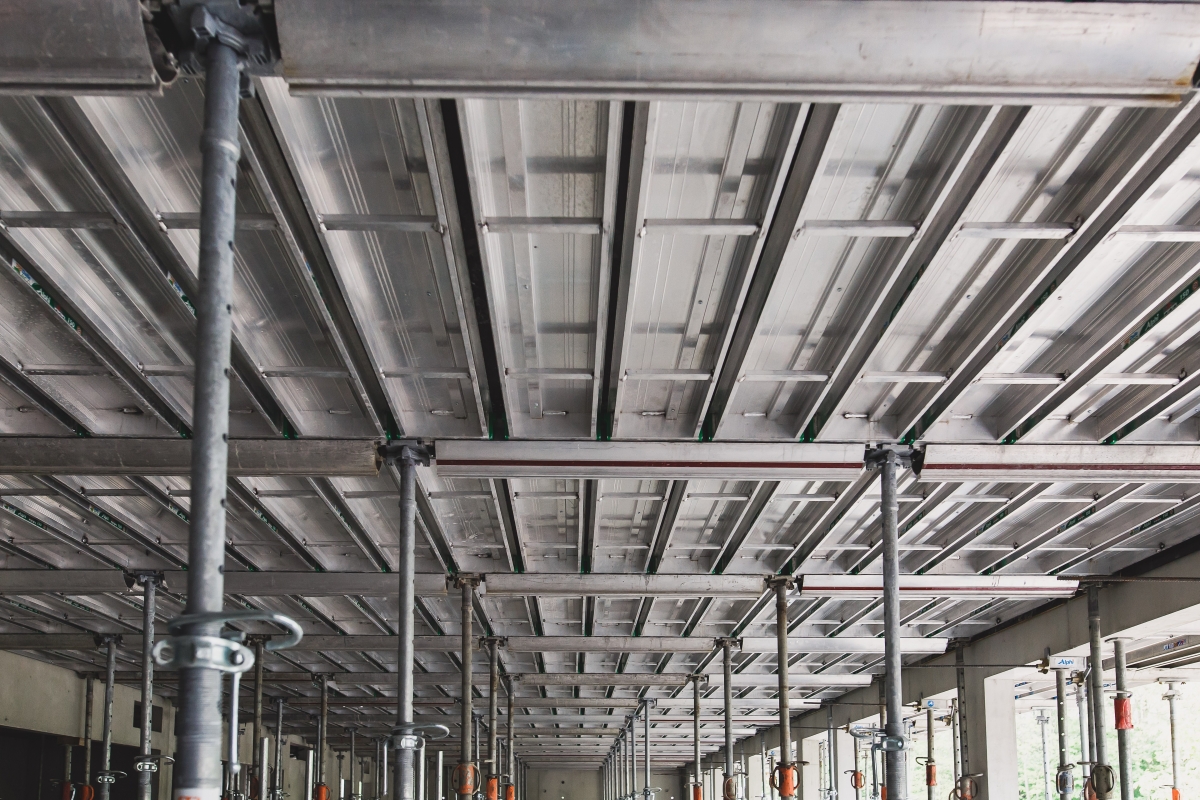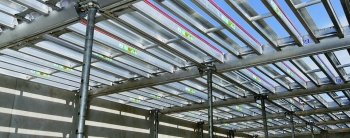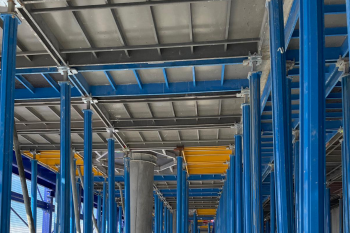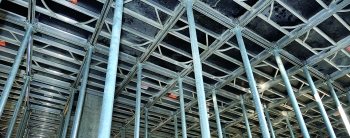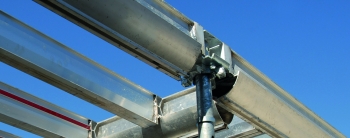TopDalle Eco+
The versatile TopDalle Éco system suits every type of building: offices, homes, retirement residences, hospitals, prisons, etc.
The work area is secured by full-surface Eco+ panels, preventing falls from height and the risk of tripping, slipping, or falling objects.
Installation and removal of Éco+ panels is performed from ground level
With theTop Perche, the formwork is set up and removed from ground level (no need for the rolling safety ladder).
Increased stability
The multi-support areas of the Eco+ panel, the continuous support extendable beam combined with the corner beam, provide optimum stability.
Protection from theft
The chemical process patented by Alphi prevents fraudulent recycling of aluminium beams.
100% "Eco
Designed to limit CO₂ emissions, the Eco+ panel is made from 75% ASI-certified recycled aluminium.
It is 100% recyclable.
Short distribution channels
The production method implemented by Alphi favours operators in French industry.
Transportation is limited to national territory (distance between suppliers under 460 km).
Fewer lorries
Optimum packing has been achieved by limiting the thickness of the Éco+ panel and designing its shape for more compact stacking.
Lorries can now carry 15% more equipment.
30 m² / person / day at a height of 2.50 m
(formwork, adjustment, cladding and formwork removal).
Easy removal
The drop-head for fast removal integrated in the technical support (Alphi patented system) keeps the slab supported during formwork removal. The rotation of the aluminium structure is accelerated.
Surface continuity
• Working on a full surface facilitates mobility above the formwork.
• The continual adjustment of the extendable primary beam and the secondary corner beam lets you go near the edges of the cell.
Practical use
• TopDalle Eco+ and TopDalle Eco panels are perfectly backward-compatible
• Simplified assembly thanks to adjacent Éco+ panels.
• At the end of the span, the spacing of the Éco+ panel can be adjusted to the cell, leaving a 10 cm gap.
Easy identification
Coloured tips allow easy recognition of different Éco+ panel lengths.
- Exclusive extrusion process to create wide, single-piece profiles.
- The plastic tips are shock-absorbent, limiting breakage.
Compatibility
TopDalle Éco is compatible with earlier Alphi product lines.
Maintenance
Servicing is simplified because aluminium is easy to repair.
The portable elements of TopDalle Éco are 20% lighter than traditional solutions.
The system limits manual load handling.
Less noise pollution
Éco+ panels have shock-absorbent plastic tips, which reduce noise.
Concrete formwork thickness
Above 80 cm, according to configuration.
Quality of concrete undersides
Deflection limited to L/400 (quality exceeding DTU 21 recommendations for concrete floors).
Nailing to wooden inserts
• Securing the plywood (15 mm authorised) by nailing.
• The asymmetric insert can adapt to different configurations.
Regulations
beams are designed in accordance with the NF 93-322 standard concerning formwork..
Cleanliness
The shape of the Éco+ panel limits laitance on the vertical wall.
Tests
All TopDalle Éco elements have been tested by the LOCIE laboratory at the University of Savoie Mont-Blanc.



